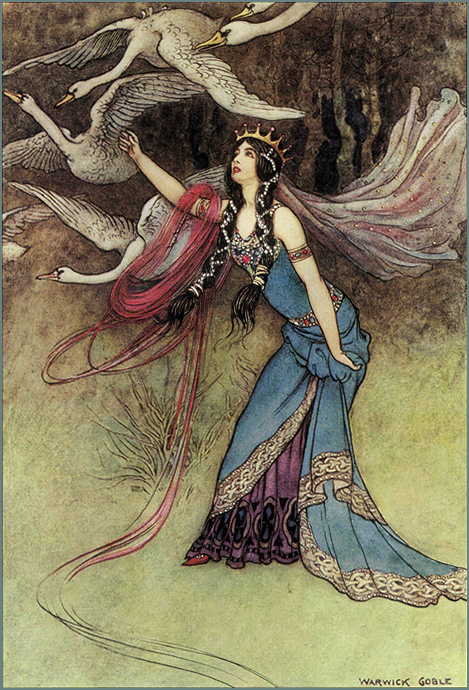The Processing of Magic
March 9, 2022
The tale most associated with the stinging nettle plant is the Brothers Grimm's fairy tale The Six Swans. It's a well-known tale of magic and love that has inspired countless re-tellings. I particularly enjoyed Juliet Marillier's adaptation "Daughter of the Forest".

I've read versions where the plant needed to break the spell is stinging nettle and I've heard it referred to as starwort. Starwort is a common name for Stellaria media. A lovely and useful herb in its own right, but it isn't a fiber plant and it wouldn't make sense in the context of the story.

On page 151 of his book Japanese Mythology and the Primeval World: A Comparative Symbolic Approach, Peter Metevelis states that the transformation into a bird is symbolic of death. In the tale of the six swans, the girl restores her brothers to human form with a cloak of nettles, essentially providing them with a new skin that brings them back to life.
Performing magic of that nature always costs something. The constant pain caused by the nettles would qualify as payment and the willingness to take up the task every day in spite of that pain would serve as undeniable proof of one's strength of will and commitment to the desired outcome of the spell.

Whichever herb you prefer, it's an inspiring tale about the strength of love.
You may read it here.
Here's a reading of it on YouTube.
A very similar tale is told in Norway, entitled The Twelve Wild Ducks. You may read that here.
I leave you with a moral tale. Specifically, a fable. The advice is as valid today as it ever has been. Thanks for stopping by!
The Boy and the Nettles
By Aesop
A boy was stung by a Nettle. He ran home and told his mother, saying: “Although it pains me so much, I did but touch it ever so gently.”
“That was just it which caused it to sting you.” said his mother. “The next time you touch a Nettle, grasp it boldly and it will be soft as silk to your hand and not in the least hurt you.”
Moral:
Whatever you do, do with all your might.

